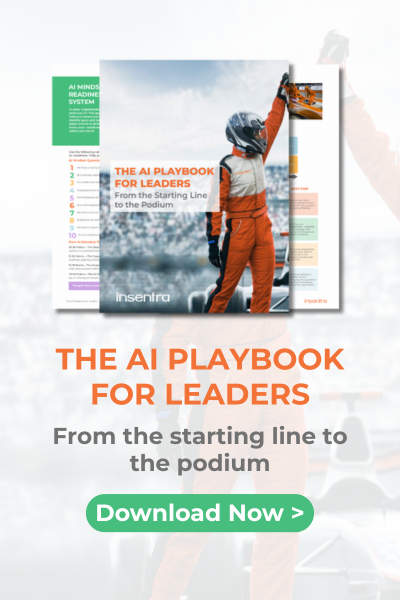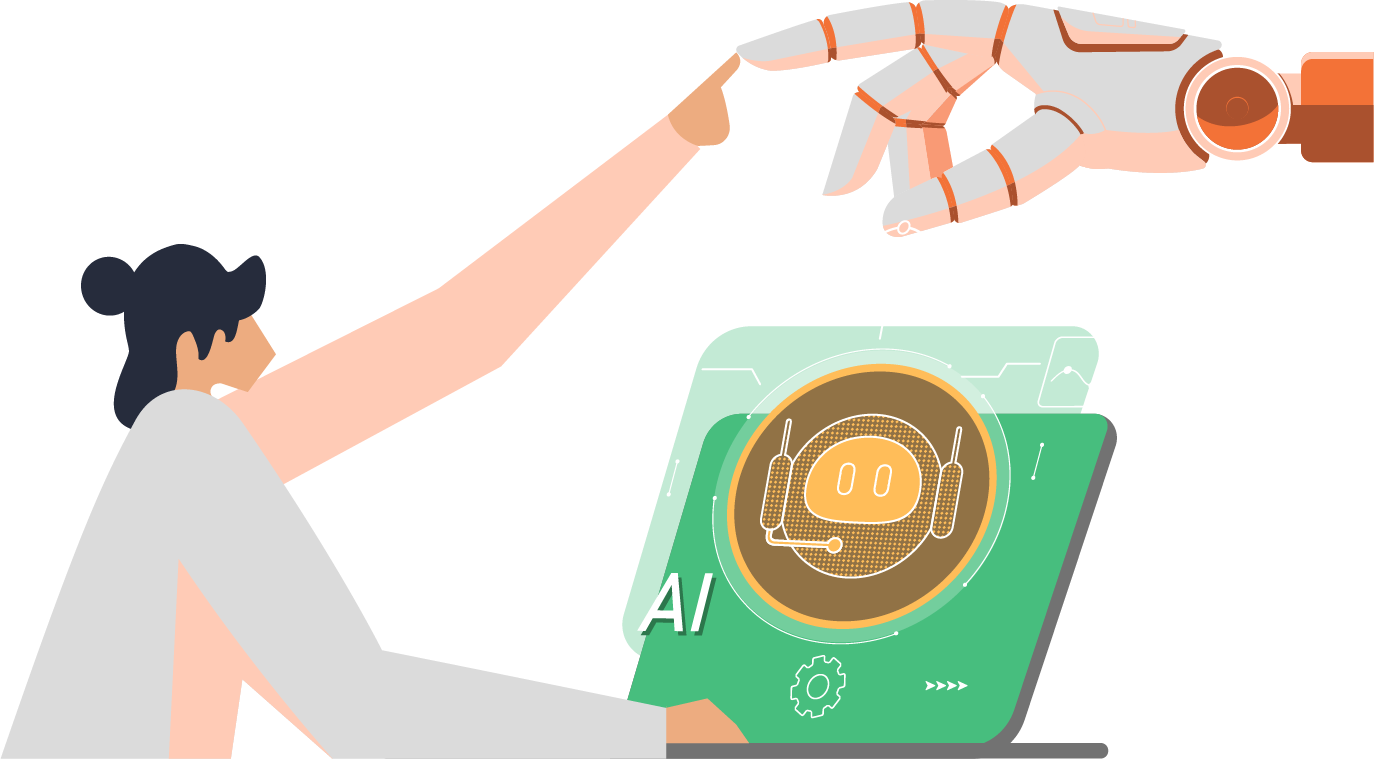AI is no longer a side project or an experiment at the edges of the business. It has become the infrastructure of competitiveness, the invisible operating system that determines who moves fast, who scales smart, and who gets left behind.
The numbers tell a compelling story. IDC projects worldwide AI spend will surpass $632 billion by 20281, while governments from Washington to Singapore are embedding AI directly into national competitiveness strategies. The World Economic Forum reports that AI fluency is already reshaping the labour market, creating a premium for leaders and organisations who can wield it effectively.
Yet here in Australia, we face a peculiar paradox. The latest National AI Readiness Index 2025 reveals that 83% of SME leaders believe AI will impact their business within 12 months, and 90% are already experimenting with tools like ChatGPT. But fewer than half feel confident acting on it. Only 24% have a clear strategy.
This is the danger zone. Belief without action. The comfort of dabbling in generative tools, without the courage or clarity to embed AI into decision-making, operations, and growth.
The divide is opening fast between the Trailblazers shaping the future and the Sleepwalkers drifting toward irrelevance.
So the real question for executives is no longer whether to adopt AI. The question is far sharper. Will we act in time to matter?
The Execution Gap: When Conviction Collides With Capability
Australian businesses aren’t questioning AI’s value. They already see it as inevitable. The problem is what happens between belief and implementation.
Leaders are convinced AI is critical, but day-to-day constraints, limited resources, stretched teams, and uncertainty over where to begin, leave most stuck circling rather than moving. The urgency is highest in tech and professional services (52%) and in mid-sized firms with 100 to 500 employees (55 to 57%), where the competitive stakes are clearest. But across the board, adoption feels hard, slow, and risky.2
This tension creates what the Index calls “plenty of movement, no momentum.” Leaders are exploring, testing, even piloting AI. But without a structured pathway to move from curiosity to execution, AI remains something to talk about rather than something to rely on.
The implication is stark. The market is splitting between those who treat AI as a task booster and those who build it into the operating model of the business. And that divide is widening fast.
The Seduction of Shallow Wins
Consider what happens when belief is high but execution is low. Most organisations get trapped in what appears to be progress but is actually stasis. They play with AI at the edges, celebrating small wins while the foundational architecture of their business remains unchanged.
The data exposes this pattern clearly. While 92% are using generative AI tools such as ChatGPT, Microsoft Copilot, or Google Gemini, only 19% have ventured into agentic AI, systems that work across functions, integrate workflows, and deliver outcomes. Generative AI accounts for 83% of perceived value, while agentic AI barely registers at 1%.2
The appeal is obvious. Generative AI feels easy, safe, even fun. It writes a draft, summarises a report, or speeds up a routine task. It gives leaders a taste of transformation without demanding structural change.
But here’s the trap. These are shallow wins. They improve tasks but don’t change how the business thinks, decides, or competes. They create the illusion of transformation while preserving the status quo.
Agentic AI represents something fundamentally different. These systems connect data across silos, make context-aware decisions, and drive measurable impact in sales, finance, operations, and beyond. But because agentic AI requires integration and leadership commitment, very few organisations have taken the leap.
The global evidence reinforces this. McKinsey estimates AI could unlock $4.4 trillion in annual productivity gains3, but the lion’s share comes from embedding AI across core workflows, not isolated pilots. Harvard Business Review found that companies scaling AI across functions see 3x times higher ROI compared to those stuck in departmental experiments.4
What we’re witnessing is a collective rationalisation. Leaders mistake activity for progress, experimentation for execution, and individual productivity for organisational transformation.
In a market where competitors are already building AI-first operating models, that’s not just a missed opportunity. It’s an existential miscalculation.
The Anatomy of Executive Paralysis
If the case for AI is so clear, why do so many executives hesitate? The answer reveals something uncomfortable about modern leadership.
The barriers most cited by SME leaders tell a story. Security and compliance concerns (29%), budget constraints (28%), lack of internal capability (23%), and integration struggles (22%) dominate the conversation.2
But look deeper. These aren’t obstacles. They’re symptoms of leadership caught between urgency and uncertainty. Executives know AI matters, but the path forward feels risky, complex, and resource-intensive. The real question they’re asking isn’t “Should we do this?” It’s “How do we start without breaking the business?”
This creates a dangerous inversion. Leaders delay in search of clarity, while competitors move. The Trailblazers experiment, integrate, and build confidence with every cycle. The Sleepwalkers wait, hoping for certainty that never arrives.
What these leaders fail to see is that waiting doesn’t reduce risk. It amplifies it. Shadow AI emerges as employees adopt tools without oversight. Data silos deepen. Competitors embed AI into decision-making, widening the performance gap. The organisation builds no muscle memory, no institutional knowledge, no competitive advantage.
In this context, slowing down is not prudence. It’s drift. And drift, in an AI-driven market, is a leadership failure masquerading as caution.
The hardest truth? The clarity executives are waiting for will only come from the action they’re avoiding.
Leadership Posture as the Real Divider
The National AI Readiness Index reveals something that should unsettle every executive. AI readiness isn’t defined by sector, size, or even resources. It’s defined by leadership posture.
The report segments Australian SMEs into four groups.2
Trailblazers (17%) demonstrate high urgency and low difficulty. They’re confident, aligned, already embedding AI across the business.
White Knucklers (24%) show high urgency but high difficulty. They see the need but are tangled in complexity and integration challenges.
Tinkerers (36%) exhibit low urgency and high difficulty. They’re curious, but experiments remain fragmented with little leadership buy-in.
Sleepwalkers (23%) display low urgency and low difficulty. They’re waiting, watching, and drifting.
Here’s what matters. The dividing line is not technology access. The dividing line is how leaders behave when faced with uncertainty.
Trailblazers are decisive. They align teams, set guardrails, and move from pilots to practice. They understand that perfect information is a luxury they cannot afford. Sleepwalkers wait for the “perfect time” and watch the gap widen. They mistake deliberation for wisdom.
And that gap is measurably real. According to the report, “Reinventing Enterprise Operations with Gen AI,” the number of companies that have fully modernised, AI-led processes has nearly doubled from 9% in 2023 to 16% in 2024. Compared to peers, these organisations achieve 2.5x higher revenue growth, 2.4x greater productivity and 3.3x greater success at scaling generative AI use cases.5
This isn’t about efficiency anymore. It’s about competitiveness, valuation, and survival.
Consider the deeper implication. In 12 to 24 months, when AI fluency is embedded in how your competitors think, decide, and operate, what will be the cost of catching up? How do you compress years of organisational learning into months? How do you compete against companies whose entire operating model has been rebuilt around AI-enabled decision-making?
Every executive must ask themselves a hard question. Am I leading my organisation toward Trailblazer status, or am I rationalising my way into Sleepwalking?
Because in an AI-first economy, hesitation doesn’t make you safe. It makes you obsolete. And the data suggests that most Australian SME leaders are choosing obsolescence, whether consciously or not.
From Belief to Execution: Building the Bridge
The diagnosis is clear. Most organisations don’t lack ambition. They lack a system, a way to turn belief into execution without falling into hype, drift, or chaos.
The gap between knowing and doing isn’t bridged by more research, more pilots, or more proof of concept. It’s bridged by structured action that addresses the real barriers including capability gaps, integration challenges, and the need for speed with safety.
What separates Trailblazers from Sleepwalkers isn’t vision. It’s execution architecture. They’ve built repeatable processes to move from experimentation to implementation, from generative dabbling to agentic outcomes, from leadership hesitation to organisational momentum.
This is where frameworks like the Insentra Generative AI Sprint Series become critical. Structured in three progressive phases, it provides the bridge from belief to impact.
- Generative AI Sprint 1 is The Art of the Possible (75 minutes, complimentary). It cuts through the noise, aligns leaders and teams, and delivers a shared vision with concrete opportunities. No jargon. No hype. Just clarity.
- Generative AI Sprint 2 focuses on Organisation-wide AI Adoption (4 weeks). It builds hands-on confidence through role-based training, establishes guardrails, empowers champions, and delivers use cases that create measurable business impact.
- The Agentic Sprint drives AI Innovation (10 weeks). It transforms proven use cases into working AI products or agents that drive ROI without needing a dedicated tech team.
This isn’t theory. It’s practice. It’s how executives move their businesses from “we should” to “we did.” It’s the system Trailblazers already have and Sleepwalkers desperately need.
The Compounding Cost of Waiting
Here’s what the data doesn’t tell you, but every executive should understand. The cost of inaction is compounding daily.
While you’re waiting for the perfect strategy, your competitors are building muscle memory. While you’re concerned about getting it wrong, others are learning from iteration. While you’re seeking certainty, the market is rewarding speed.
The window for comfortable adoption is closing
The window for comfortable adoption is closing. Soon, AI fluency won’t be a competitive advantage. It will be table stakes. And the organisations that waited for clarity will find themselves scrambling to catch up in a market that has already moved on.
Think about what this means practically. Every month of delay is another month your competitors are embedding AI into how they think, decide, and operate. They’re building institutional knowledge you don’t have. They’re discovering workflows you haven’t imagined. They’re training teams in capabilities you haven’t developed.
More critically, they’re making mistakes and learning from them. When you finally start, you’ll make those same mistakes. Except you’ll make them in a market where AI fluency is expected, not exploratory. Where customers have higher expectations. Where the performance bar has risen.
The question isn’t whether AI will transform your industry. It already is. The question is whether you’ll lead that transformation or be transformed by it.
And here’s the uncomfortable truth. For many executives, the decision has already been made by not deciding. Inaction is a choice. Delay is a strategy. And both have consequences that are only visible too late.
The Choice Ahead
Every executive reading this stands at a fork in the road. One path leads to Trailblazer status through decisive action, structured implementation, and market leadership. The other leads to Sleepwalking through rationalised delay, widening capability gaps, and eventual irrelevance.
The choice seems obvious. But the data shows that most Australian SME leaders are choosing the second path, whether consciously or not.
So, here’s the final question every executive must answer honestly.
Are you building the system that turns belief into action? Or are you hoping that belief alone will be enough? Because in the AI economy, it won’t be. The divide is opening. Which side will you be on?
Source:
- Worldwide Spending on Artificial Intelligence Forecast to Reach $632 Billion in 2028, According to a New IDC Spending Guide
- National AI readiness index report 2025
- McKinsey: Superagency in the workplace: Empowering people to unlock AI’s full potential
- Havard Business Review: A Radical Solution to Scale AI Technology
- Accenture: How reinvention-ready companies are driving growth and relevance with gen AI











